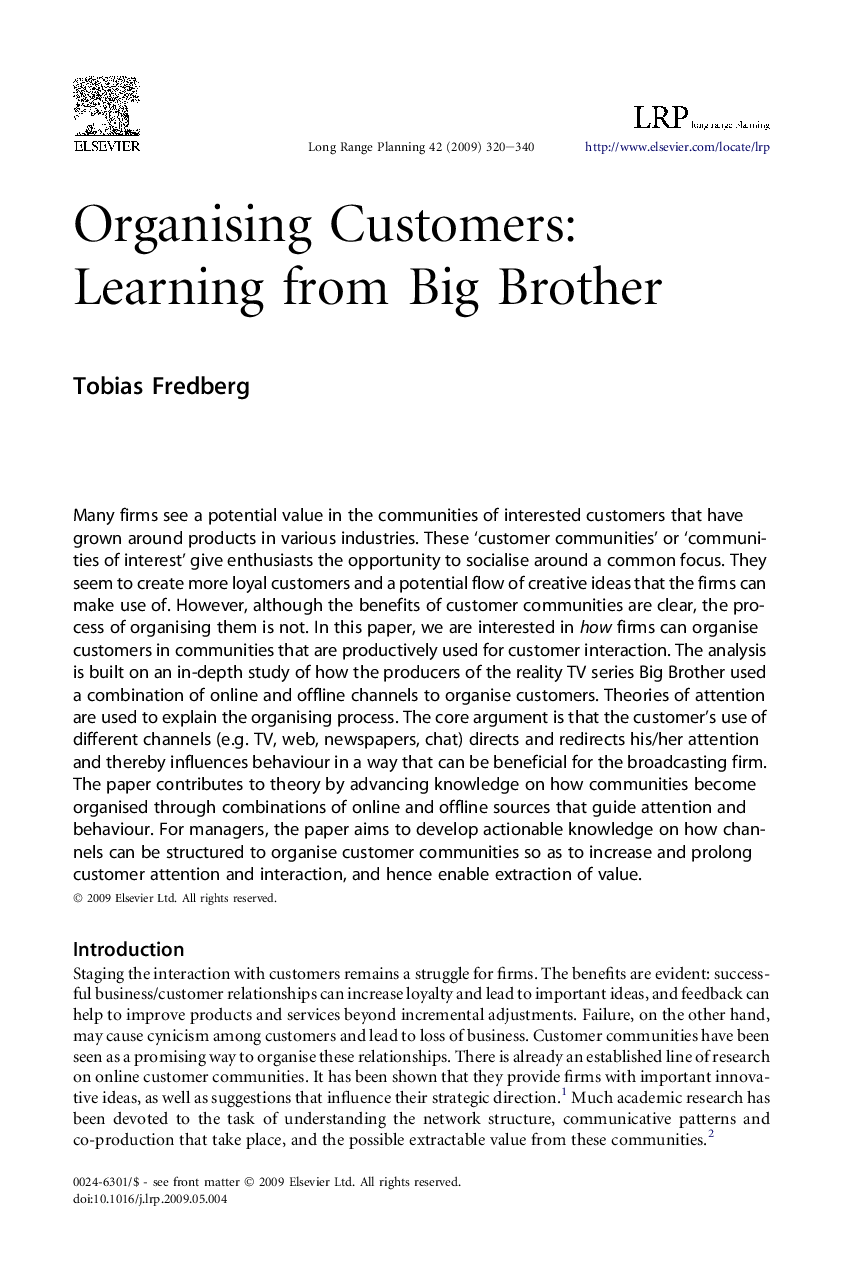| Article ID | Journal | Published Year | Pages | File Type |
|---|---|---|---|---|
| 1021461 | Long Range Planning | 2009 | 21 Pages |
Many firms see a potential value in the communities of interested customers that have grown around products in various industries. These ‘customer communities’ or ‘communities of interest’ give enthusiasts the opportunity to socialise around a common focus. They seem to create more loyal customers and a potential flow of creative ideas that the firms can make use of. However, although the benefits of customer communities are clear, the process of organising them is not. In this paper, we are interested in how firms can organise customers in communities that are productively used for customer interaction. The analysis is built on an in-depth study of how the producers of the reality TV series Big Brother used a combination of online and offline channels to organise customers. Theories of attention are used to explain the organising process. The core argument is that the customer's use of different channels (e.g. TV, web, newspapers, chat) directs and redirects his/her attention and thereby influences behaviour in a way that can be beneficial for the broadcasting firm. The paper contributes to theory by advancing knowledge on how communities become organised through combinations of online and offline sources that guide attention and behaviour. For managers, the paper aims to develop actionable knowledge on how channels can be structured to organise customer communities so as to increase and prolong customer attention and interaction, and hence enable extraction of value.
